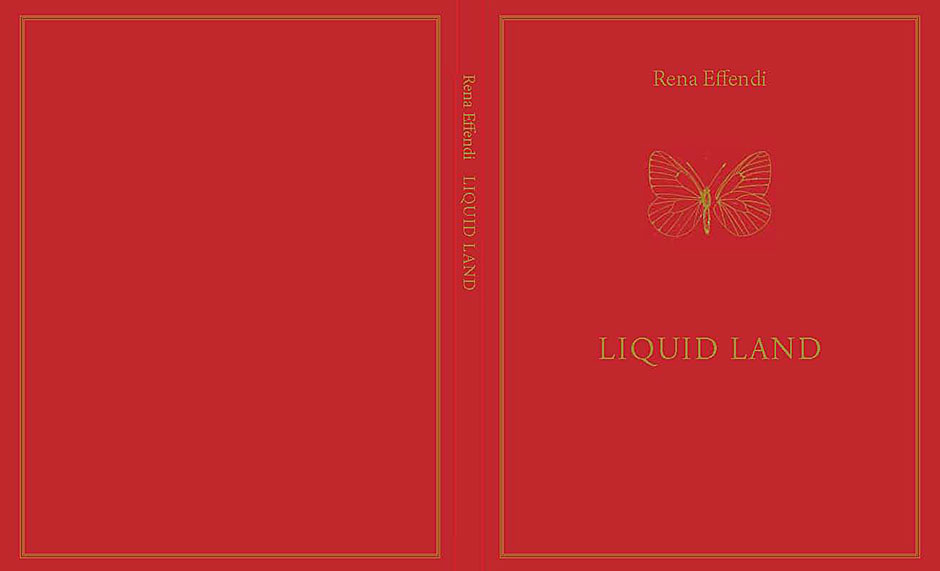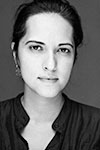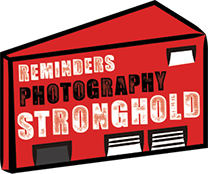The 1st Photobook Review with the Author, Rena Effendi
To celebrate our Photo book library opening, we have started a new monthly event called, “Photobook Review with the Author”, where the author (photographer) talks about his or her recently published book.
Too many photographers are known internationally, doing good work and publishing new books that are unfortunately unheard of here in Japan. Not everyone in Japan can go and see their exhibitions, but there is interest here, if only we could get a copy of good photography books.
We have five questions that we will ask each photographer, and we will be taking questions from the audiene prior to the event.
Our first guest will be social documentary photographer, RENA EFFENDI who is based in Baku, Azerbaijan. Her new book, “LIQUID LAND” have just been published by Dutch publisher, Schilt Publishing. Rena spoke to us through Skype from Azerbaijan during the event.

Rena’s book in available free delivery at Book Depository.
Full Transcript of our Q&A with Rena Effendi
Q. Who would you like this book to be seen the most?
If I can answer freely to this question, I’d say that in the fantasy world, I’d like my father to see this book. He passed away in 1991 right before the Soviet Union was falling apart, but I really wonder what his reaction will be to the book. As a scientist, may be he will hate it, he will be angry that I mixed his pictures with mine. I turned a science project into an art project, you know. May be he will love it.
He was a very creative guy, he always thought outside of the box. And even with his butterfly book, he wanted to make it accessible for a wider audience. He didn’t want it to be purely scientific. In his butterfly project, he wanted to mix it with Greek mythology, because every butterfly is named after a character from Greek Mythology, he wanted to explain why, the connections of butterfly behaviour to a certain character from Greek Mythology. So he had wild ideas as well. So I am really wondering what his reaction will be because when I was making this book, I kind of thought of him. I was sort of making it for him. The reason why the cover is red, in the Soviet Union they used to produce this book, they call them red books. They were basically books that publicised what happened to nations in the Russian and Soviet empires.
Like the my father’s butterflies who were threatened by extinction and the red colour is an alarming colour, basically a big whistle for everyone to think about how to save the species, that’s why I chose this colour. On the cover there is a butterfly, it is my father’s drawing. It is how he drew them, with scientific precision. If you look closely, you will see the wings are separated. It’s because the female and male gender of the butterfly. So I really had him in mind.
At the same time I also want my daughter, she is now three years old to see the book. She hasn’t seen the book yet, I haven’t shown it to her yet. I want her to see it, I want her to pay attention to it, appreciate it. Hopefully one day, she will, may be through this book understand what I do. She will learn to appreciate me not only as a mother but as someone who is passionate about work, about photography and she will understand it better. Like I understand my father.
So this book is a dedicated to all parents.
YUMI: What did your Mother think about the book?
She doesn’t speak English, so we are waiting for the Russian version to arrive to show it to her so she can read it. The text is very important. So I really want her to see it as well, but my mother and father had a very difficult marriage, my father was away a lot, hunting and they divorced when I was quite young. So I think it would be difficult for her to see this book, but at the same time, may be also good. because it will give her something good to remember about my father. It will give a good memory. So it’s really a family album, than anything.
Q. What do you think you gained from publishing your other books and how do you think a book is different to an exhibition?
I think publishing a book is a major step, you pay a lot of money, at least as a photographer, as a documentary photographer, it’s a lot of money. But I think you gained recognition, worldwide, I mean look at me I am sitting with you in Japan thanks to the book. You gain recognition, you gain sort of an international recognition if your book is good, you get a lot of press. With “pipe dreams” I had a lot of press, mainstream press, even TV coverage, there was a documentary film made in Germany and all the rest of it, for me it was a real milestone it’s very important. It’s also artisically, it’s a real achievement, it’s sort of more permanent. It’s out there and it will stay there. The exhibition is more of a transient phase, less solid, it’s up for a month, and it closes. It’s not like people will see it for much longer, unless the exhibition is at a museum.
Book, you are able to make a longer impact I think than an exhibition I think. A book has a longer lifespan. Ideally you want the two together, an exhibition and a book. When that happens it’s really great, when people could look at your pictures on the wall, they can see the aesthetic details. The book is more of an art object. You can take it in your hands and you can carry it around. You can keep it. You can’t with an exhibition. A book becomes an object, a treasured object and people can collect. So it’s not transient, it’s in physical form. It’s a physical expression of what you are doing, of a long chapter of your photographic life, that’s what it is.
Q. How involved were you in the making of the book?
I took all the pictures. It is very important. I very much like to be involved in the design process. For example, because I have such a clear idea as to what I wanted to do. I had the concept already, it was formulated. I worked very closely with Victor Levie. Really great, really understanding, we developed a fantastic relationship where we worked very closely with great synergy together. We first tried to separate the butterfly and have a subsection in the book. It didn’t work so we changed it again. We put it back together how it was and it came together. So Victor came up with very creative ideas to respond to some of my ideas. It was, we did it together basically side by side, and he understood me very well in building a family album. It’s very personal. I like to edit my own work.
Q. If you had to pick one photo book with you in a fire, which one will it be?
Very difficult question but you know it’s funny that you asked that question, my first book “Pipe dreams” was actually burned down. 60 copies of my book was sent to me to Baku by my publisher Shilt, the government ceased them, they were taken away from me, they were later burned in incinerators with drugs and illegal books. So I am very sensitive about the fire question.
So I think if I have to choose one, I will probably try to save pipe dreams, I wouldn’t want it to go to the fire again. I love photo books, I collect them I have tons of them, I treasure them, I can’t really pick one.
One of the last books I very much liked Donald Weber’s Interrogation. I think it was fantastic book. I tend to like books that are on a more personal level rather than just documentation. Something where I can see a portrait of the photographer as much as the portrait of the subjects they are photographing. I’d like to see the personality of the photographer coming through, I think these books are most interesting for me. Right now my books are in Cairo I took all my photo books to Cairo. So I have to travel with hundreds of kilos of books, it’s a pain but what can you do?
YUMI: What do you have coming up?
I am hoping to present “Liquid land” in Moscow this Winter the Russian version of the book. I am hoping to bring the English one to Azerbaijan, this time try to do it without it being burned. I’d like to show it in Azerbaijan and Georgia.
AUDIENCE: You know how your father’s subject were butterflies, he was a scientist going out to capture a different species. Looking into this different species and finding more about them. But you are going out there, as a human looking at other humans. Do you feel you are observing them, like how your father observed his butterflies?
I think it’s very much you are observing, I still can’t say I am one of them, I live in a nice house, I have gas, electricity, but with my work, I am observing life of others, trying to make a dignify portrait. A view from the side, through the prism of my understanding, not only as a journalist but it’s very important to me, to show them in a respectful way.
Not only to capture what’s there, I have a cultural baggage that I can’t rid of. There is a lot of similarity between my father’s work and my work, in fact that is also the subject of my book, once you read it you will understand that’s what the book is about.
YUMI: What are up to now?
Right now I am preparing to go to the States, to do work about the life of the native Americans on the reservation of Dakota, commissioned by a museum. And I just got back from an assignment with the National Geographic, and right now doing a project on the aquarium life that is disappearing in Europe. You will be able to see that in the Summer.

Rena Effendi Biography: Effendi has focused her documentary work on the oil industry’s effects on people’s lives in her own country. As a result, she followed a 1,700 km oil pipeline through Georgia and Turkey, collecting stories along the way. This work of six years was published in 2009 in her first book “Pipe Dreams: A Chronicle of Lives along the Pipeline”.
Time: 2012/12/16 (SUN) 16:00-17:00 (we will be opened from 15:30, do come early)
Place: Reminders Photography Stronghold
Fee: 500yen (20 seats, RPS members can come free, please fill in the form below)
Host: RPS Curator, Goto Yumi
Guest: Rena Effendi (via Skype from Azerbaijan)

